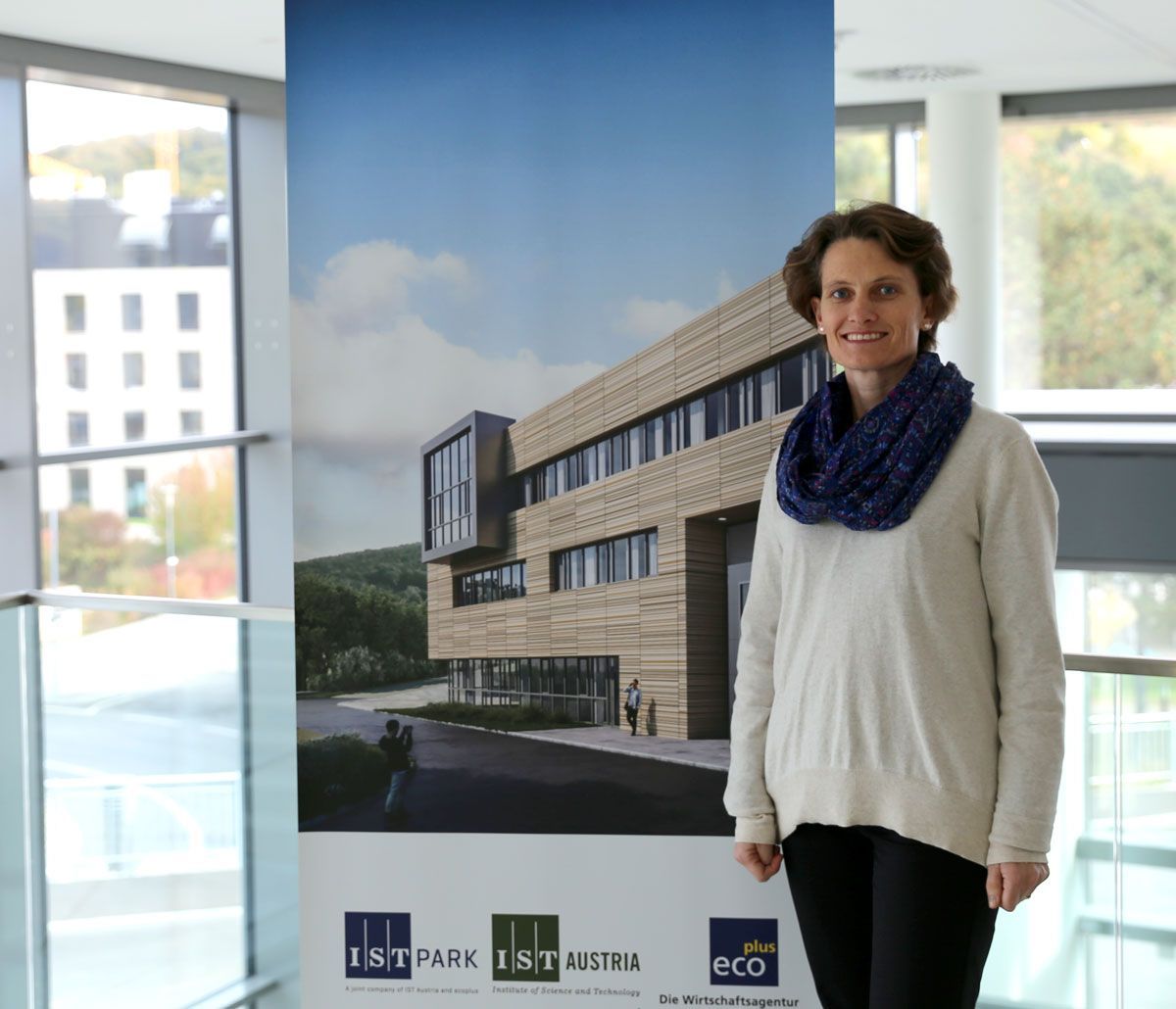Features
Insights to inspire, build and guide sustainable founding teams
14 October 2019
Dr. Ingrid Kelly, Technology Transfer Manager and European Patent Attorney explains the work of the Institute of Science and Technology Austria and shares her views on how innovation in Europe might be further stimulated.

Dr Ingrid Kelly
What are the main activities of the knowledge transfer group and how important it is to the Institute of Science and Technology Austria (IST)?
IST Austria was founded in 2006 with the dual aims of conducting excellent fundamental scientific research and educating world class scientists. Technology transfer was treated as a priority early on, which has led in this short space of time to the establishment of a small but widely experienced tech transfer team, a technology park for startups (which opened September 2019), and a venture capital fund (IST Cube) investing in tech startups. A major focus of the tech transfer team is the maturation of technologies through special fellowships for future spin-off founders.

What are the hottest innovation areas within the institute?
Research groups at IST Austria cover all the natural sciences and mathematics, and much of the research is interdisciplinary, for instance, at the intersection of biology and mathematics. We see particular potential in areas such as AI, neurosciences and quantum physics, where we have built up a critical mass of leading-edge researchers.
Examples of work underway at IST
Analysis of human faces using a measurement-based skin reflectance model:
3D printed composite molds:
What are the main benefits to academics and businesses of engaging in technology transfer today?
I see technology transfer as a necessity rather than a choice for both sides. Academia needs to demonstrate to society that the research output and education it delivers is fit for the modern world and provides tangible benefits to taxpayers. Technology-based businesses have to constantly innovate to remain relevant and successful, and academia is the best source for radical innovations.
What is your most successful knowledge transfer project?
Due to the young age of our institute, it is difficult to predict which projects will be most successful in the long term. Personally, I am excited about the potential of a spin-off project we are incubating which aims to deliver personalised medicine for neglected neurodevelopmental disorders such as autism.
Are there secrets to successful technology transfer?
Technology transfer is a people business. Forging mutually respectful relationships with researchers is critical, but that alone is not sufficient. Networking with companies and the local startup scene is the best way to move projects forward by getting early feedback and taking concrete measures towards commercialisation.
Technology-based businesses have to constantly innovate to remain relevant and successful, and academia is the best source for radical innovations.
How is technology transfer evolving? Are models changing?
In the seven years since I started in tech transfer, I have observed a significant shift towards promoting the formation of academic spin-off companies as the preferred route of commercialisation. Gradually this change in approach is having an impact on the composition of technology transfer offices, as it becomes clear we are not like other administrative functions within a university, and should be staffed by individuals with an appropriate range of skills in finance and business in addition to the traditional scientific, legal and IP knowledge bases.
Are there common barriers to effective knowledge transfer?
Knowledge transfer simply cannot happen without the willingness of researchers to get involved, and it is a fact of life that a certain proportion of researchers will be averse to knowledge transfer for various reasons (such as negative past experiences, ethical concerns, or time constraints). For projects backed by engaged researchers the biggest hurdle is bridging the worlds of academia and business, and in particular, building startup teams with diverse talents and skills.
Does the patent system hinder or help invention and technology transfer in your view? What value does it bring?
The patent system was not set up with academia in mind, but we are clearly bound by the same ground rules as users from industry. The biggest disadvantage we have relative to industry is that we don’t normally have the luxury of delaying publications to secure solid protection, since publishing is still the highest priority for researchers pursuing ambitious careers in academia. Nevertheless, many universities have adopted professional IP strategies and are succeeding in managing and monetising their patents, including laying the foundations of solid patent portfolios for their spin-off companies.
For projects backed by engaged researchers the biggest hurdle is bridging the worlds of academia and business, and in particular building start-up teams with diverse talents and skills.
How could the patent system be improved?
Europe has become the outlier by not offering a grace period for prior disclosures by inventors. A globally harmonised system in which Europe would join the US and most of the other major markets in the world in offering a twelve month grace period would be advantageous to academia, allowing us more flexibility in patent filing strategies and generating strong and comprehensive patent portfolios.
Do European policy makers understand how challenging invention is for both academics and business?
I have a lot of respect for European policymakers in this area, and believe that there are many positive developments, as evidenced in the planning for Horizon Europe. The involvement of professionals with relevant practical experience in innovation is having a noticeable impact on policy making and implementation. Academic institutions and startups are heavily dependent on the policies put in place to encourage and fund high-risk technological endeavours.
What is your message to academic and business innovators today who are thinking about cross-sector collaboration?
To the academic innovators, I would say that collaboration is a great experience, particularly for young researchers who have an open mind as to their future career directions. My advice to business innovators would be to try to get insights into how the academic institution works before setting out on a collaboration. Many institutions are very experienced in this style of collaboration and have clear policies. Others are inexperienced and time can be lost in trying to establish the ground rules.
What advice would you offer policy-makers seeking to encourage innovation in Europe today?
I am absolutely convinced that excellent research is being conducted all over Europe and that we have plenty of talent and potential. We also have young researchers who are excited about the prospect of taking cutting-edge technologies into the real world, but what we are missing in many places is a pool of experienced and ambitious deep tech entrepreneurs to inspire, build and guide sustainable founding teams. I would welcome schemes which would make it possible to embed entrepreneurs from all Europe into startups to give the teams greater ambition and clear direction.
About Ingrid Kelly
Ingrid Kelly entered the intellectual property profession following completion of a PhD in molecular biology from the University of Cambridge. She obtained a Certificate in Intellectual Property Law at the University of London, subsequently qualified as a European Patent Attorney and as a UK Chartered Patent Attorney and assumed various senior roles within the Corporate IP department of Novartis in Basel.
In 2012 she took over management of the Technology Transfer Office of the University of Vienna. In her most recent career move, Ingrid joined the Technology Transfer Office of the Institute of Science and Technology Austria, where she is responsible for the life sciences technology portfolio. In addition, she is part of the investment team at IST Cube, a venture capital fund that invests in early-stage deep tech academic spin-offs from Austria and beyond.
Ingrid is the author of “Patents for Technology Transfer”, a practical guide to IP for technology transfer offices. She is a registered technology transfer professional (RTTP).
Author: Emma Bluck
The views expressed in this feature are those of the interviewee and may not reflect the views of 4iP Council or its members. The purpose of this feature area is to reflect thinking on the topic of intellectual property and enable open discussion.



